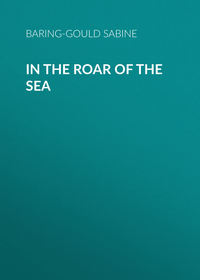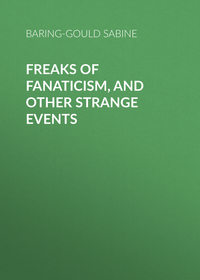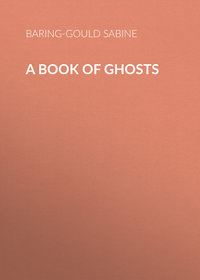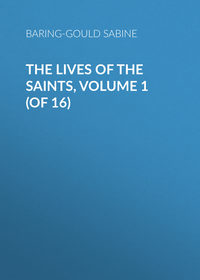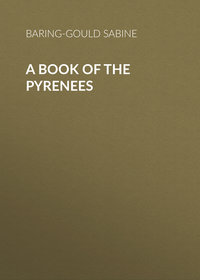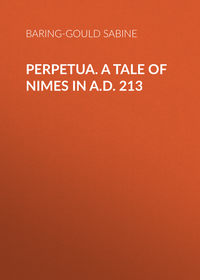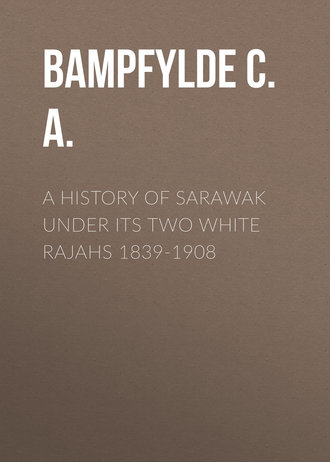 полная версия
полная версияA History of Sarawak under Its Two White Rajahs 1839-1908
After the death of Pangiran Usup it might have been supposed that the Sultan, feeble and irresolute, would have fallen under the influence of his uncles, Hasim and Bedrudin, and would have been led to favour the English alliance, but this was not so. He was angry at the rout of the pirates of Marudu, and sore at being constrained to sign the death warrant of Usup, his favourite and adviser; as also at the shrinkage of the profits derived from the pirates, though at the expense of the lives and persons of his own subjects. He bore towards Hasim and Bedrudin that dislike which a narrow and dull mind feels towards those who are morally and intellectually his superiors, and such as a reigning prince not infrequently entertains towards the man who will succeed him on his throne. Accordingly he surrounded himself with a number of scoundrels, led by one Haji Seman, a man of low birth, the successor of Pangiran Usup as the Sultan's chief adviser, who fawned on and flattered him, and to whom he could pour forth his grievances; and these men, many of them pangirans and chiefs, fanned his animosities, and encouraged him in his evil courses, for they were still favourable to the piratical party, and were desirous of avenging the death of Pangiran Usup and the destruction of Marudu. The princes, especially Hasim, who had recently been publicly declared successor to the throne by the Sultan, with the title of Sultan Muda, and Bedrudin, were well aware that they were regarded with disfavour, and that there was a powerful party against them; they knew they were in danger, though they did not suspect that the danger was so imminent, and had applied for protection or release from their engagements, but, to quote the Rajah, "they were not protected, they were not released, except by a bloody death in their endeavour to carry them out." The Sultan detested them as favouring the English Rajah, and inclined to a pro-British policy, and he resented having these men so near the throne, and that the succession should devolve on Hasim to the prejudice of his own reputed son, so he resolved to sweep them from his path, and to break his engagements with and to defy the English. As a further incentive his avariciousness was played upon, and it was pointed out to him how much he would gain by acquiring the riches of his uncles were he to put them to death. Swayed by his own atrocious motives, this wretched imbecile, "brutal in spite of his imbecility," who had "the head of an idiot and the heart of a pirate," readily yielded to the promptings of his perfidious counsellors, and issued orders for the despatch of all his uncles. So secretly were preparations made to carry out the execution of this mandate that the doomed princes were taken completely by surprise by the well-armed bands that silently and simultaneously surrounded their houses in the darkness of the night. With most of the brothers resistance was impossible, and they were soon butchered, but Bedrudin fought heroically. He could, however, do little against the large body of murderers opposed to him, with only a few followers to assist him. These latter were soon cut down or had fled. His sister and a favourite concubine remained, and fought by his side, as well as a faithful slave, a lad named Japar. Desperately wounded, having had his left wrist broken by a shot, his shoulder and chest cut open so as to disable his right arm, and his head and face slashed, but not before he had cut down several of his assassins, Bedrudin, with the women and the lad, who had also all been wounded, retired into the house and barred the door. He bade the lad bring him a keg of powder, break in the head, and strew some of the contents about himself and his female companions; then he drew off his signet ring, and ordered Japar to escape and bear it to his friend the Rajah, with the message that he should tell the Queen of England of his fate, that he had been true to his engagements, and begging his friend, with whom his last thoughts were, never to forget him. Japar slipped through an aperture in the floor, dropped into the water, and swam to a canoe, in which he escaped. Then, whilst the murderers, awed by his courage and desperation, were hesitating to break into the house, the true-hearted prince applied the match which blew himself and his two noble companions into eternity.132
The Sultan Muda Hasim, though wounded, managed to escape from his burning house to the opposite side of the river with several of his brothers, his wife and children, but he was pursued and surrounded by numbers. Most of his brothers had been killed, and others wounded, and no hope remained to him but to throw himself on the mercy of his nephew, the Sultan. He sent messages to him to beg that his life might be spared, but this was peremptorily refused. Death being inevitable, he retreated to a boat that chanced to be moored to the bank, and placing a cask of gunpowder in the cabin called upon his three brothers and his sons who were with him to enter, and immediately firing the train, the whole party was blown up. Hasim, however, was not killed by the explosion, but, determined not to be taken alive, he put a pistol to his head and blew out his brains.
Of the many uncles of the Sultan but four escaped, and many of their relations, as well as other chiefs, were sacrificed. Hasim's full brother, Muhammad, was desperately wounded, and so cowed as to have his spirit broken. He was spared as being harmless. Another brother went permanently mad with terror. Thus the royal family had been nearly exterminated, and the omen of the death of Rajah Api fulfilled.
Japar escaped on board H.M.S. Hazard, which had arrived and anchored below Bruni some three months after the tragedy, and was taken in her to Kuching. He was instrumental in saving the life of Commander Egerton by warning him not to land, as a plot had been formed to take his life.
When news of this crime, which took place at the end of December or the beginning of January, 1846, reached the Rajah he was deeply moved. Of Bedrudin, whose loss he considered irreparable, he wrote: —
A nobler, a braver, a more upright prince could not exist. I have lost a friend – he is gone and I remain; I trust, but in vain, to be an instrument to bring punishment on the perpetrators of the atrocious deed… My suzerain the Sultan! – the villain Sultan! – need expect no mercy from me, but justice he shall have. I no longer own his authority, or hold Sarawak under his gift … he has murdered our friends, the faithful friends of Her Majesty's Government, because they were our friends.
The Rajah trusted the British Government would take action against the Sultan, but if not, remembering he "was still at war with this murderer and traitor," he would make "one more determined struggle" to punish him and to rescue the survivors of the Sultan Muda's family, and if that failed, then Borneo133 and all for which he had so long, so earnestly laboured, he considered must be abandoned. But help was drawing near, for Rear-Admiral Sir Thomas Cochrane on hearing of these troubles hastened from India with his squadron to support the Rajah,134 and to bring the Sultan to account. The fleet arrived off Sarawak at the end of June, and, picking up the Rajah, the Admiral at once proceeded to Bruni, visiting Serikei and Kanowit up the Rejang on the way, to administer a warning to the people there. The Sultan, frightened at what he had done, and expecting reprisals, which, however, he was determined to oppose by force, strengthened the existing defences, threw up new ones, and called together 5000 men for the defence of the capital. He proclaimed that he was determined to have no more dealings with the English, and that he purposed to drive the English Rajah from Sarawak.
On the arrival of the fleet at the mouth of the Bruni river the Sultan made a clumsy attempt, similar to that he had made on Commander Egerton, to get the Admiral into his power. He sent two men, who represented themselves to be pangirans, in a gaily decked prahu to welcome the Admiral, with a letter to the Rajah, expressing hurt surprise at the conduct of Commander Egerton in not having visited him and in having refused his presents, and begging the Rajah to put no faith in Japar's tales. The messengers said that the Sultan would not permit the Admiral to take up more than two boats with him; but these men were detected by the Rajah to be men of no rank, so they were detained on board, and their prahu was secured astern.
On the 8th, having transferred his flag to the steam frigate Spiteful, the Admiral proceeded up to Bruni with the Phlegethon leading the way, and the Royalist which was towed by the Spiteful. The gunboats of the ships left behind also attended, and the total number of blue-jackets and marines was 600; yet the Brunis, trusting to their superiority in numbers, and to the really efficient steps they had taken to fortify the town and its approaches, felt confident that they could successfully oppose this formidable force, and opened fire on the Phlegethon as she approached the lower batteries. Fortunately the guns were aimed too high to do damage. The fire was at once returned, – guns, rockets, and muskets responding; the blue-jackets and marines dashed ashore, and the enemy, commanded by Haji Seman, not awaiting their onslaught, fled into the jungle, abandoning the guns. The squadron then advanced, silenced battery after battery, seven or eight in number, and captured the cannon in them, consisting of 68, 42, and 32 pounders, which, had they been well laid and served, would have seriously crippled the ships; and the forts were so strongly constructed and so well placed, that they would have been difficult to capture had they been manned by a less despicable foe. As it was, the loss incurred on both sides was but slight.
The Sultan, his army, and the population fled, and as night fell, Bruni was an empty shell. A week was spent by Captain Mundy of the Iris, with whom went the Rajah, in a fruitless endeavour to capture the Sultan, but he scampered away beyond reach, and the force, after destroying his inland stronghold, returned to the ships.
The people soon began to return, and a provisional government was formed by the Rajah with Pangiran Mumin, who afterwards became Sultan, and Pangiran Muhammad at its head, and a message was despatched to the Sultan with assurances of safe-conduct, if he would return to Bruni, govern wisely and justly, and observe his engagements with the English to do all in his power to keep the piratical party in check. Sir Thomas Cochrane regretted that he had not the authority, as he had the power, to place the Rajah on the throne, a measure which he was convinced would have been hailed with acclamation by the whole people. After having completely destroyed all the batteries,135 the Admiral sailed on July 20 to look up the piratical villages to the north-east of Bruni, taking the Rajah, and leaving the Hazard as a guard-ship at Bruni. Off Tempasuk a Lanun prahu was captured, having two Spanish captives on board, who had been taken off Manila; the crew of this prahu were sent in irons to Manila to be dealt with by the Spanish authorities – we may presume they never returned. Tempasuk was burnt on August the 1st, and Pandasan the next day. Both the Royalist and the Ringdove had brushes with pirate vessels, the former destroying two with their crews, and the latter one, but with the loss of her master and a marine.
After visiting the late Sherip Usman's town in Merudu, which it was found had not been occupied since its destruction just a year previously, the Admiral passed on to China, leaving Captain Mundy, whom the Rajah now joined on the Iris, to take any further operations against the pirates that might be found necessary. One pirate prahu was met with and destroyed, also another small Lanun stronghold near Pandasan. At Kimanis information was received that Haji Seman, after he had fled from Bruni, had fortified himself at Membakut, near the Kimanis river; he was attacked and driven into the interior. The Lanuns shortly afterwards abandoned the north-west coast, and established themselves at Tungku on the east coast, where they were long left unmolested.
On the return of the Rajah to Bruni in the Phlegethon on August 19, he found the Sultan still absent, so sent him a message that if he returned he would be answerable for his safety, and in reply the Sultan sent a humble letter laying his throne and kingdom at the Rajah's feet. He at once returned and sued for pardon. The Rajah would not see him until the murderers of his uncles had been brought to justice, and until he had given convincing proof of his intention to govern his country uprightly, with the assistance of advisers worthy of trust; pardon he must ask of the Queen, upon whose flag he had fired, and the agreements he had previously made must be re-ratified. All this the Sultan engaged to do. In addition, he paid royal honours at the graves of his murdered relatives; and, taking the most humble tone and position, gave Sarawak to the Rajah unconditionally, and granted him the right of working coal.136 But even then the Rajah refused to see him.
To conclude the story of Sultan Omar Ali, he gave little more trouble after the severe lesson he had been taught, became afflicted with cancer in the mouth, and died in 1852, when Pangiran Mumin succeeded to the throne. He was a brother-in-law to the murdered princes, but only remotely connected with the royal family, being descended from Muhammad Ali the twelfth Sultan of Bruni, in or about 1660, brother of the Sultan Abdul Jalil ul Akbar, the ancestor of Omar Ali, who was seventh in descent from him. The feeble-minded Abdul Mumin died at a great age in 1885, when he was succeeded by Hasim Jalil ul Alam Akmadin, the reputed son of Omar Ali; he died in 1906, over 100 years of age, and was succeeded by his son, the present Sultan, Muhammad Jamal ul Alam.
The Rajah returned to Kuching at the end of August in the Phlegethon, with "a perfect menagerie of old women and children," the unhappy survivors of the Sultan Muda's family.137 Many other families had already fled from Bruni to seek a refuge in the universal haven, Sarawak.
By the deed which the Rajah now bore back with him, the one under which Sarawak Proper is still held, the sovereignty of James Brooke and his heirs in perpetuity over the raj was acknowledged absolutely, and by it the Sultan surrendered his claim to suzerainty. No yearly payment was to be made for the province,138 and it was left to the Rajah to dispose of as he pleased; hence he was at liberty to hand it over to a foreign government if he so wished.139 Sarawak now became de jure independent; de facto, it had been independent for some years; and the Rajah "held a double claim to its possession – the will of a free people strengthened by the cession made by a sovereign, who was unable to rule his subjects."140 Such being the position of the Sultan, the Rajah maintained the title de jure to be of small value, whilst the title derived from the election and support of a free people he considered of superior importance. The power of Bruni had become but a shadow, not only in Sarawak but along the coast as far as Oya, and the prerogative of the Sultan to grant their country to any one was disavowed by the people of Sarawak. Their ancestors had been free, and they had but a few years previously voluntarily placed themselves under the Bruni Government, upon certain conditions, but in the decay of the Government of Bruni these had been disregarded, and misrule succeeded. They rebelled and successfully maintained an independent position; they had offered their country to Holland; and had finally surrendered to Mr. Brooke, conditionally upon his becoming their ruler. All possession of territory in Borneo was a question of might, and the Sultan himself looked to the Rajah "to support his throne, and to preserve his government."141 Though the question of the independence of Sarawak142 has been placed beyond doubt by its recognition by the British Government in 1863 as an absolutely independent State, yet it has been maintained, and by some who should know better, that the country is still under the suzerainty of Bruni.
To conclude the eventful year of 1846, Captain Mundy returned to Sarawak in December with instructions from the Secretary for Foreign Affairs, Lord Palmerston, conveyed through Sir Thomas Cochrane, to occupy the Island of Labuan, after consulting with the Rajah as to the best mode of carrying out his instructions.143 He at once proceeded to Bruni, the Rajah going to Singapore. Labuan was ceded on the 18th, and the British flag was hoisted on the island on December 24.
The Dutch Government had viewed the Rajah's elevation and settlement at Sarawak, as well as the past and recent operations of the British on the north-west coast, with unfeigned jealousy, and had, during the last two years, repeatedly remonstrated with the British Government for countenancing these proceedings, which the Dutch Minister, by a stretch of imagination, exaggerated into having been the cause of a general uneasiness arising in Holland "as to the security and integrity of the Netherlands possessions in the Eastern Archipelago," and a suspicion of "the Government having surrendered, or very nearly so, the Eastern Archipelago to England." Further, "the King's Government," extravagantly wrote the Minister, "cannot forget how much it has had to suffer at different epochs in India from the practices of this individual (the Rajah), whom the Netherlands authorities have everywhere found in their way, and constantly in opposition to them." In his position as H.M.'s Political Agent, "combined with his long experience and intimate knowledge of Borneo," with "his desire to annoy, and his ill-will towards the Netherlands," the Minister considered him a very inconvenient and harassing personage to the Netherlanders and their Government. The Netherlands Government alleged that the Rajah's action in Sarawak and the occupation of Labuan were an abandonment of the spirit of the Treaty of 1824, if not of the letter. But by that Treaty the Dutch sphere of influence in Borneo had been limited to the equator, north of the line remaining within the sphere of British influence. As the Minister foresaw, Lord Aberdeen, on these grounds, denied that the recent measures taken in Borneo were in any way a contravention of the treaty or inimical to Dutch interests. Lord Aberdeen, in supporting the Rajah, eulogised him as a gentleman of high character, whose "efforts have been directed to the furtherance of civilization, to the discouragement of piratical pursuits, and to the promotion of the welfare of the native population," and contended that he had obtained his possessions "in the most legitimate manner." He further implied that the Rajah's legitimate objects and pursuits having met with undue interference by the Netherlands authorities, occasion had perhaps been given for disputes arising between him and the Netherlands Government, for he was naturally "not favorably disposed to the extension of Dutch influence in the parts where he had acquired possessions";144 an influence which the Governor-General of Netherlands India in his rescript of January 1846, mentioned in footnote, p. 93, said his Government did not exercise in the State of the Sultan of Bruni, which extended from cape Datu to the Kimanis river.
The Rajah wrote: —
The Netherlands Government has made an attack upon me, but it has failed. I am astonished at the misrepresentations to which it stoops… I never had any dispute with the Dutch authorities; and the only communications which have passed between the Resident of Sambas and myself have been of a most friendly kind.145
But though she failed, it was some years before Holland gave up her pretensions to Sarawak, pretensions which twice before they could have realised – in 1833, when Pangiran Usup offered her the country, and, a few years later, when the Sarawak people asked for her protection; but the one involved a monetary equivalent, and the other military support, and she thought to acquire the country by cheaper methods, which the Rajah knew she still meant to do after his death if she could. Without his influence, and without his influential friends, he did not think that Sarawak could subsist after he was gone, and this it was that made him so urgent to be put under British protection. When, finally, the British Government did recognise Sarawak as an independent State, the Netherlands Minister was asked if he were aware of the recognition. The reply was, "Holland will not recognise Sarawak, as the Government is convinced that Sarawak cannot last beyond the lifetime of Sir James Brooke." He added, "I told you this seven years ago, and I see no reason, from recent events, to alter my opinion."146 This was in 1863.
The early part of 1847 was spent by the Rajah recruiting his health on Penang hill, where a letter was received from the Sultan notifying that Haji Seman had given himself up at Bruni, and asking for instructions of the Admiral and the Rajah as to his disposal. It was not considered that his execution was now necessary as an example, and the Sultan was informed that the past could be buried in oblivion, but that misconduct in the future would revive its recollection.147
In Singapore the Rajah received instructions from the Foreign Office to proceed to Bruni to conclude a treaty with the Sultan for the arrangement of commercial relations, and for the mutual suppression of piracy; to reserve to H.M.'s Government power and jurisdiction over all British subjects residing within the Sultanate, and to bind the Sultan not to alienate any portion of his dominions to any foreign power or to others without the sanction of her Majesty's Government. The Rajah proceeded to Bruni in the Nemesis, touching at Kuching on his way, and the treaty was signed on May 27. On the 30th, when leaving the Bruni river, the Nemesis was hailed by a passing canoe, and received the information that a fleet of pirates was in the offing. The steamer immediately started in pursuit, and the pirates, finding escape impossible, came to anchor in a small bay with their bows seaward, and secured their prahus, eleven in all, together with hawsers. The engagement which followed, and which lasted several hours, the pirates fighting desperately, resulted in five of the pirate prahus being destroyed, and six effecting their escape.148 The Nemesis lost two killed and six wounded, and the pirates about sixty killed. Fifty more, who had escaped inland, were captured by the Sultan's men, and executed in Bruni. About 100 captives, mostly Chinese and Malays, were rescued and sent to Singapore. The pirates, who were Baleninis, were on their return from a year's cruise laden with plunder and captives. They had proposed to attack Kuching, but had thought better of it.149
The desire to visit England was now strong upon the Rajah. Besides personal reasons, the wish to see his relations and friends, and to obtain change and rest, he also felt that he could effect more than by correspondence were he personally to interest Ministers in Bornean affairs and urge on them the necessity of a decided course for the suppression of piracy, which could be put down were a steady course pursued instead of mere convulsive efforts, and Sulu he wished to see crushed.150 Sarawak, where all was peaceful, would be safe under the administration of his connection, Mr. A. C. Crookshank.151 Labuan was established as a naval station under naval administration. Bruni had been reduced to subjection, and was powerless to give further trouble, and the coast was generally quiet; so, there being nothing requiring attention in the immediate future, he sailed from Singapore in July, and arrived in England early in October.
And now honours rained on him. He was presented with the freedom of the City of London; Oxford University conferred upon him the degree of LL.D.; he was graciously received at Windsor by the Queen and the Prince Consort; was appointed Governor of Labuan, and Commissioner and Consul-General in Borneo, and made a K.C.B.152 The United Service, the Army and Navy, the Athenæum, Travellers, and other Clubs elected him an honorary member. He was lionised and fêted, and was received with marked distinction by every one, including Ministers.
He sailed from England on February 1, 1848, with his Labuan staff, in the Mæander, commanded by his old friend and ally, Captain Keppel, and having the present Rajah on board as sub-lieutenant.153 After spending a few months in Singapore making preparations for the establishment of his new colony, he arrived at the Muaratebas entrance of the Sarawak river in September; here he left the Mæander, and was triumphantly escorted up-river by the whole Kuching population amidst general rejoicings.




